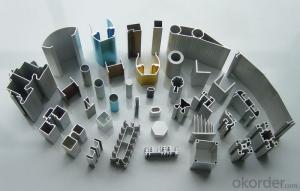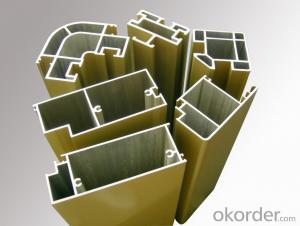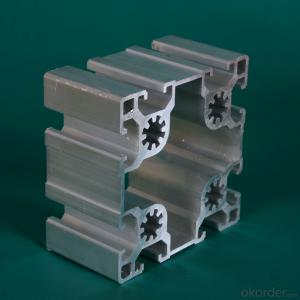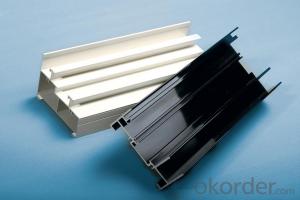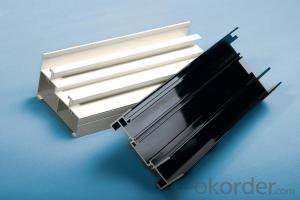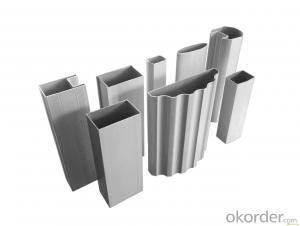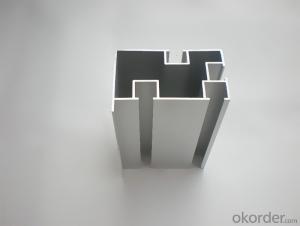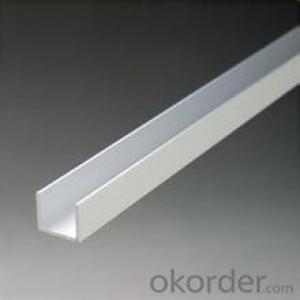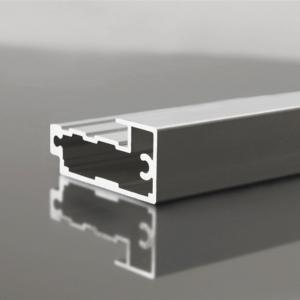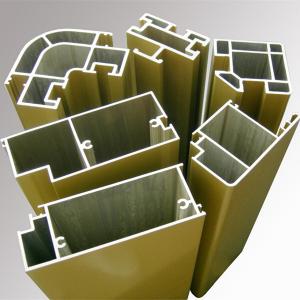Aluminum Heatsink Extrusion Profiles - Alloy 6063 Aluminium Extrusion Profiles for Industrial Application
- Loading Port:
- Qingdao
- Payment Terms:
- TT OR LC
- Min Order Qty:
- 1 m.t.
- Supply Capability:
- 50000 m.t./month
OKorder Service Pledge
OKorder Financial Service
You Might Also Like
Specification
Product Description
Product Name | Alloy 6063 Aluminium Extrusion Profiles For Industrial Application |
Alloy | Al 6063 T5 /T6 or 6061 T4/T6 or as customers' need |
Surface | Aluminum profiles of mill finish, powder coating, anodizing, polishing, sand blasting, electrophoresis and wood color. |
Profile shape | According to drawings or re-design as requested or market needs. |
Price | Based on Aluminum Ingot Price + Process fee |
Payment term | T/C T/T 30% deposit and 70% pay against copy of B/L |
Certificate | ISO9001 ISO14001 |
Warranty | 1. GB5237-2008 equal to EN12020-1.2(2001); 2. Within 15 years without powder peeling off; |
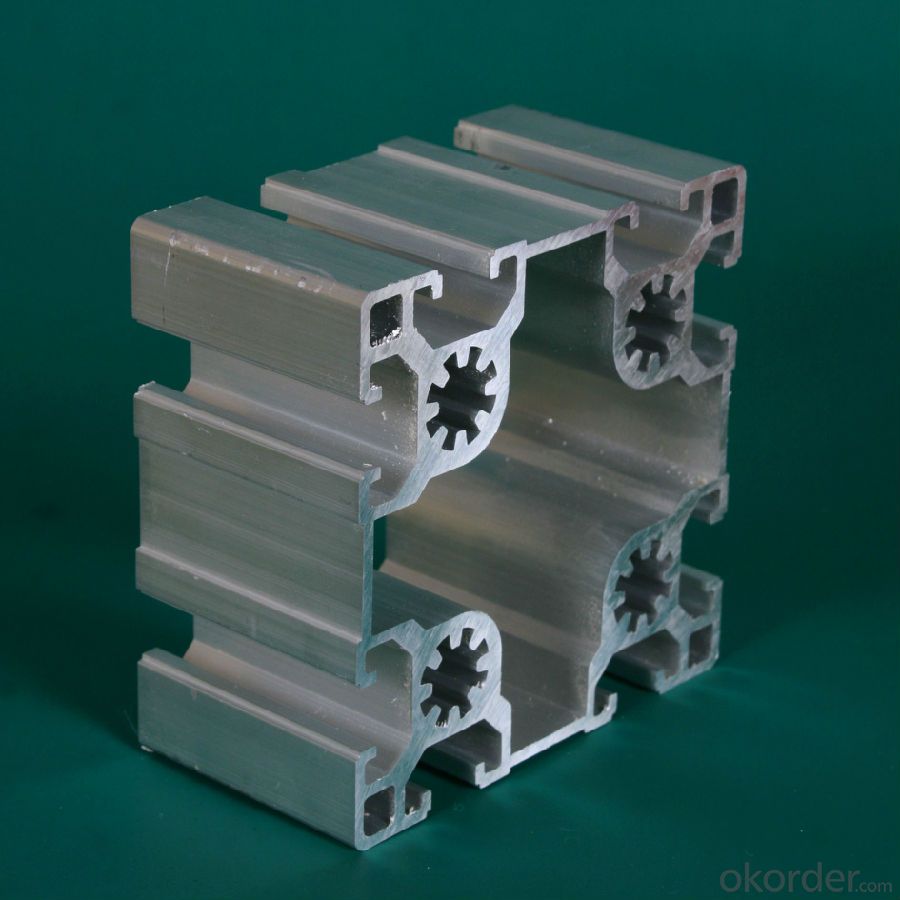
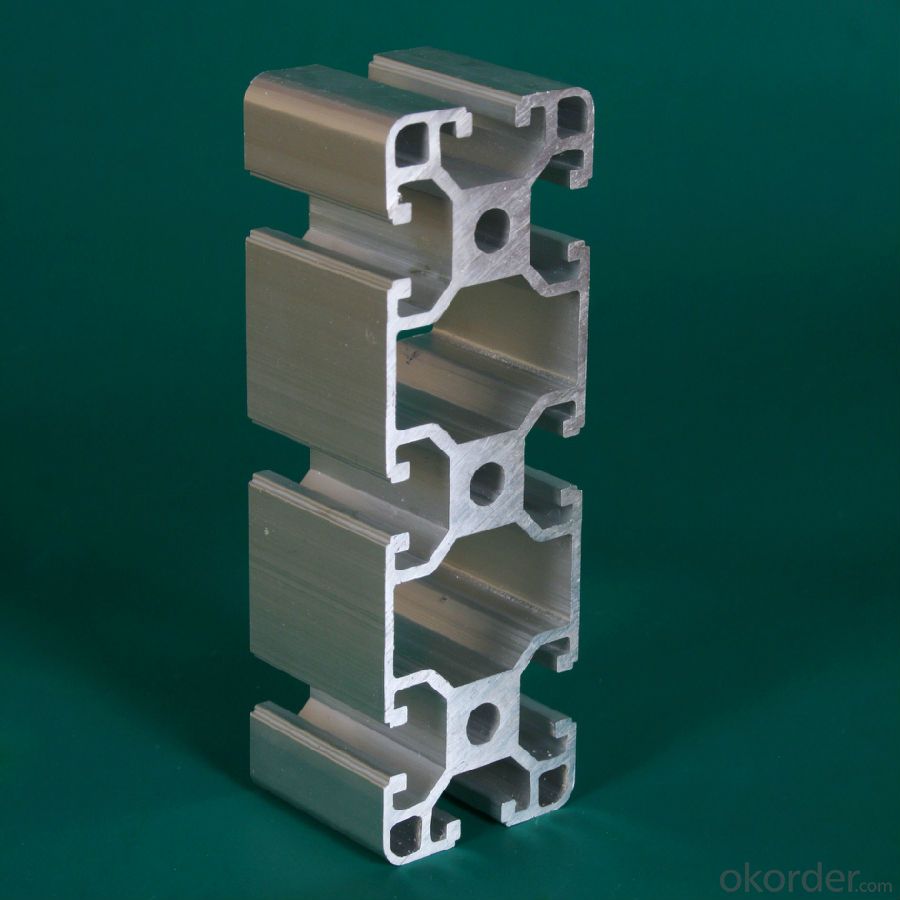
Product Advantages
1. Plenty of surface treatments for your choice, for example oxidation, electrophoresis and static powder coating, etc.
2. Strict control for surface finish, very little scratch.
3. Accurate mold as well as accurate size.
4. Standard alloy composition
5. Both ends of the profiles are very plain and with no burr.
FAQ
1. What is your main product?
We can supply the aluminium complete system, including aluminum billets, aluminum profile for windows and doors, aluminum for curtain wall, alumimun framwork, and kinds of aluminum windows and doors.
2. What’s your price?
The price is based on buyer's specific requirement, so please provide below information to help us quote exact price to you.
3. What is your payment term?
30% - 50% down payment, the balance payment against, and L/C is available.
- Q: This question asks about the variety of colors offered for aluminum profiles used in exterior siding and trim applications.
- <p>Aluminum profiles for siding and trimming are available in a wide range of colors to suit various architectural styles and design preferences. Common colors include white, black, brown, beige, and gray, which are popular for their neutrality and versatility. Additionally, there are bolder options such as red, blue, green, and yellow for more distinctive looks. Some manufacturers also offer custom color matching services for specific projects. The finishes can be powder-coated or anodized, providing durability and resistance to weathering. It's always best to check with specific manufacturers for the most up-to-date color offerings as they may introduce new colors or discontinue others based on market trends.</p>
- Q: How do aluminum profiles perform in terms of energy efficiency?
- Aluminum profiles possess outstanding energy efficiency properties, making them widely utilized in numerous industries and applications, including construction, transportation, and manufacturing. Their ability to contribute to energy savings and sustainability is well-known. The lightweight nature of aluminum is one of the key reasons for its energy efficiency. In comparison to materials like steel, aluminum profiles are considerably lighter, resulting in reduced energy requirements for transportation and installation. This, in turn, decreases the overall carbon footprint associated with the manufacturing and use of aluminum profiles. Furthermore, aluminum exhibits high thermal conductivity, enabling efficient heat transfer. This characteristic proves particularly advantageous in windows and doors applications. By efficiently regulating the transfer of heat between a building's interior and exterior, aluminum profiles diminish the need for excessive heating or cooling, thereby leading to energy savings and reduced energy consumption. Moreover, aluminum profiles readily integrate with additional energy-efficient components, such as thermal breaks and insulating materials. These additions further enhance the energy performance of aluminum profiles by minimizing thermal bridging and enhancing insulation, thereby reducing energy loss. Additionally, aluminum is an extremely durable and long-lasting material. This durability translates to structures and products made with aluminum profiles requiring less maintenance and replacement over time. Consequently, this attribute contributes to overall energy efficiency by reducing the energy and resources needed for repairs and replacements. In conclusion, aluminum profiles are highly esteemed for their energy efficiency characteristics. Their lightweight nature, excellent thermal conductivity, compatibility with energy-efficient components, and long-term durability make them a sustainable choice that can foster energy savings and minimize environmental impact across various applications.
- Q: Fenglv aluminum material how ah? What aluminum materials do you use for windows and doors?
- Domestic aluminum quality is about the same, mainly you installed in the window accessories, is the key to the life of the service, recommend several brands Bar Reid Jan Ron Lixin spring is not recommended, quality is not very rely on live
- Q: Can aluminum profiles be cut to size?
- Yes, aluminum profiles can be cut to size. Aluminum profiles are typically manufactured in standard lengths and can be easily cut to the desired length or size using various cutting methods such as sawing, shearing, or CNC machining. This allows for customization and flexibility in using aluminum profiles for different applications.
- Q: Are there any limitations or drawbacks to using aluminum profiles?
- Indeed, there exist limitations and drawbacks when utilizing aluminum profiles. One constraint lies in the comparatively lower strength of aluminum profiles when compared to materials like steel. Consequently, they may not be suitable for applications that necessitate high load-bearing capacity or structural integrity. Another disadvantage is the potential for aluminum profiles to be more costly than alternative materials. The expense of aluminum itself and the manufacturing processes involved in producing aluminum profiles can render them a pricier option for certain projects. Additionally, aluminum profiles are vulnerable to corrosion, particularly in harsh environments. Neglecting proper protective coatings or maintenance can result in the deterioration of aluminum profiles over time, thus impacting their performance and lifespan. Moreover, aluminum profiles have limited flexibility and may not be as easily modified or customized as other materials. This drawback can prove challenging in projects that require frequent alterations or adjustments. Lastly, in comparison to materials like copper, aluminum profiles possess lower thermal conductivity. Consequently, their utilization may be restricted in applications that demand efficient heat transfer, such as certain electrical or thermal management systems. In conclusion, while aluminum profiles offer numerous benefits, such as being lightweight, resistant to corrosion, and recyclable, it is crucial to consider these limitations and drawbacks before selecting them for a specific application.
- Q: Can aluminum profiles be used in electrical enclosure manufacturing?
- Certainly, the utilization of aluminum profiles is feasible for the manufacturing of electrical enclosures. Aluminum, being a flexible and lightweight material, presents numerous advantages for such enclosures. Its high conductivity ensures effective dissipation of heat, a vital feature for electronic components that generate heat while functioning. Moreover, aluminum exhibits exceptional resistance to corrosion, guaranteeing that the enclosure can endure even the harshest environmental conditions and prolong its lifespan. In addition, customization and fabrication of aluminum profiles to meet specific design requirements are easily achievable, making them suitable for various enclosure sizes and shapes. All in all, due to their remarkable conductivity, durability, and versatility, aluminum profiles are a favored option for electrical enclosure manufacturing.
- Q: Explain the positive environmental impacts of utilizing recycled aluminum in the construction industry.
- <p>Using recycled aluminum in construction offers significant environmental benefits. It conserves natural resources by reducing the need for mining new bauxite, the primary source of aluminum. This reduction in mining decreases habitat destruction, water pollution, and soil erosion. Additionally, recycling aluminum saves energy, as it requires only 5% of the energy needed to produce aluminum from raw materials. This energy conservation leads to lower greenhouse gas emissions and air pollution. Moreover, the use of recycled aluminum reduces landfill waste, as less material ends up in landfills. Overall, it promotes a more sustainable and eco-friendly construction process.</p>
- Q: This question asks for a list of various uses of aluminum profiles in the construction of buildings.
- <p>Aluminum profiles have versatile applications in building construction due to their strength, durability, and lightweight properties. They are used in curtain walls, window and door frames, structural glazing, and as support systems for facades. Aluminum profiles also serve as components in roofing systems, sunshades, and canopies. They are employed in the construction of balconies, handrails, and stairways for their corrosion resistance and ease of maintenance. Furthermore, aluminum profiles are utilized in the manufacturing of modular buildings and prefabricated structures, as well as in the creation of interior partitions and office cubicles. Their adaptability makes them a popular choice for both commercial and residential construction projects.</p>
- Q: What are the different extrusion processes used for aluminum profiles?
- There are several different extrusion processes used for aluminum profiles, including hot extrusion, cold extrusion, indirect extrusion, and direct extrusion. In hot extrusion, the aluminum is heated to a high temperature and forced through a die to create the desired profile. Cold extrusion involves forming the aluminum at room temperature using high pressure. Indirect extrusion involves pushing the aluminum billet through a stationary die, while direct extrusion involves pushing the billet through a moving die. Each process has its own advantages and is used for different applications in the manufacturing of aluminum profiles.
- Q: Are aluminum profiles suitable for modular office systems?
- Yes, aluminum profiles are suitable for modular office systems. Aluminum profiles are lightweight, durable, and have excellent structural integrity, making them ideal for constructing modular office systems. They are easy to assemble, disassemble, and reconfigure, allowing for flexibility and adaptability in office layouts. Additionally, aluminum profiles can be customized to meet specific design requirements, offering a sleek and modern aesthetic to modular office systems.
Send your message to us
Aluminum Heatsink Extrusion Profiles - Alloy 6063 Aluminium Extrusion Profiles for Industrial Application
- Loading Port:
- Qingdao
- Payment Terms:
- TT OR LC
- Min Order Qty:
- 1 m.t.
- Supply Capability:
- 50000 m.t./month
OKorder Service Pledge
OKorder Financial Service
Similar products
Hot products
Hot Searches
Related keywords
